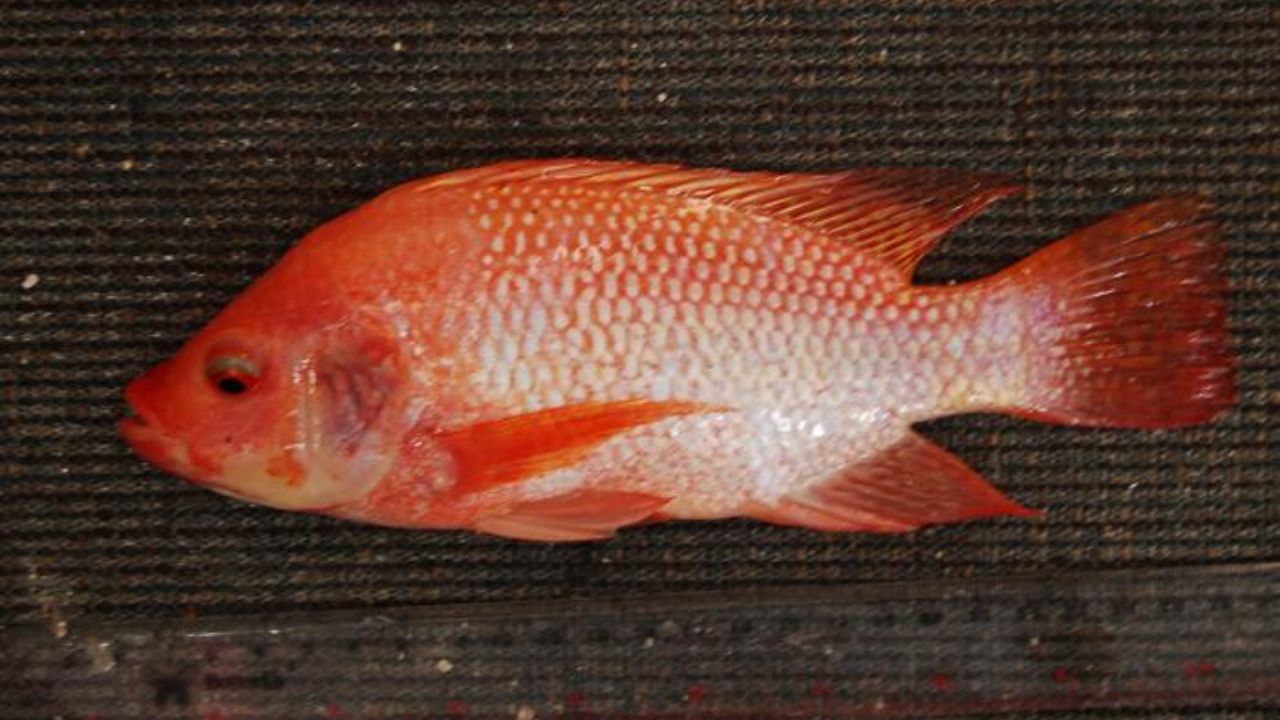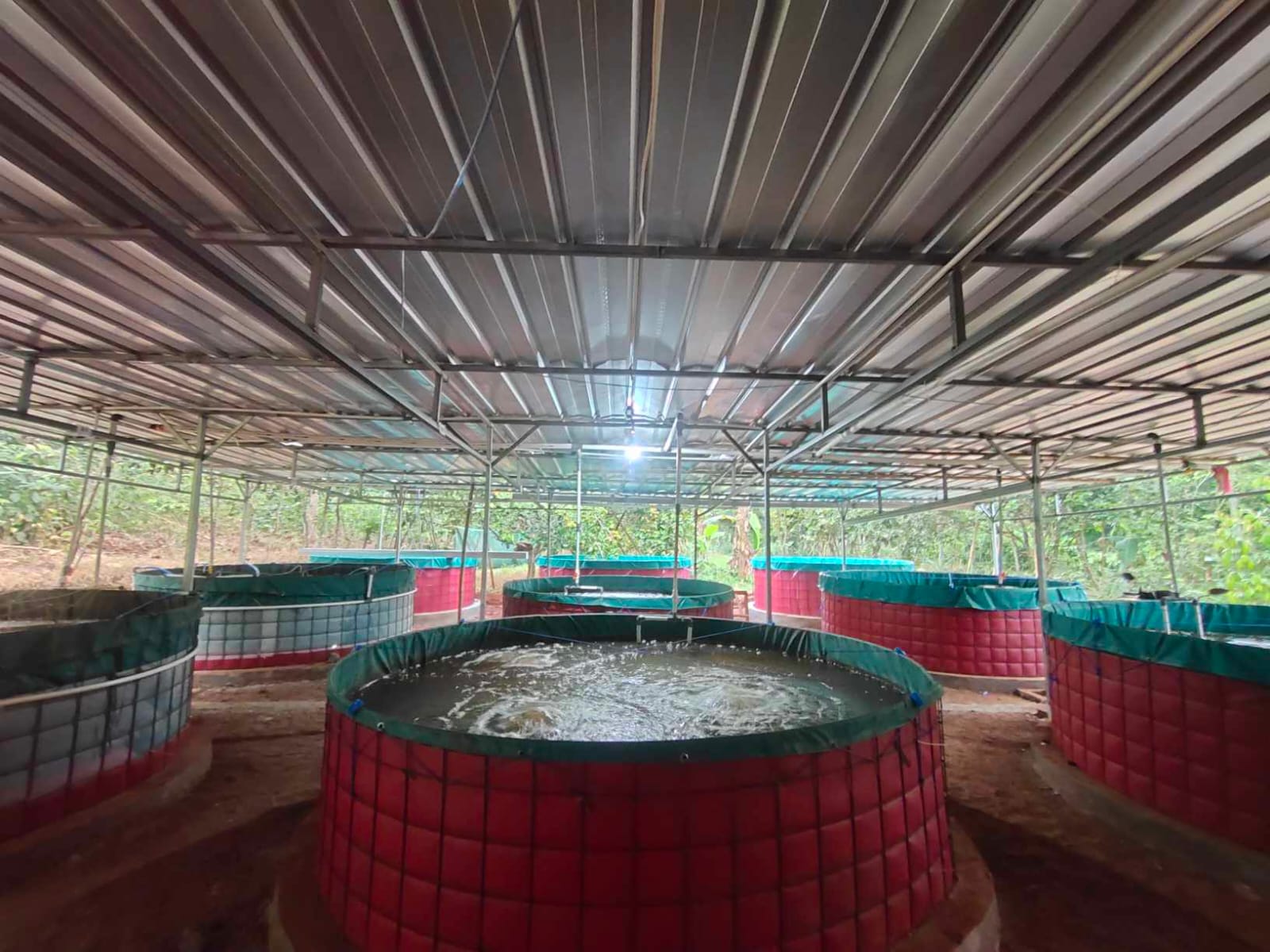In the midst of the breakthrough aquaculture industry in Indonesia, red tilapia (Oreochromis sp.) appears as a brightly shining star. Known for its delicious and nutrient-rich meat, red tilapia is not just an ordinary fish. Its specialty lies not only in its attractive taste, but also in its extraordinary cultivation capacity, even in a relatively short time compared to other tilapia species. This article will take you to know more about red tilapia, from its unique physical characteristics, to the various types that have been developed, as well as its extraordinary potential as a promising cultivation commodity for farmers.
Tilapia characteristics
Tilapia is known to have distinctive physical characteristics that make it easy to recognize among other types of fish. Morphologically, the tilapia's body tends to be slightly elongated and flat, giving an elegant impression when swimming in the water. One of its most striking characteristics is the presence of six dark vertical stripes running across its tail fin. These stripes provide an interesting contrast to the fish's body, making it stand out in the water.
Not only that, the tilapia's slightly protruding eyes with bluish-green edges are also a characteristic that makes identification easy. These protruding eyes give the tilapia an attractive appearance and give the impression that this fish is always alert to its surroundings. The terminal position of the tilapia's mouth, at the end of its body, also gives it an advantage when hunting for food in the aquatic environment.
In addition to its striking external characteristics, tilapia is also known for its distinctive fin arrangement. The tilapia's dorsal fin has 17 spines, while its anal fin has three spines and 10 weak rays. This combination gives the tilapia good maneuverability in the water, allowing it to move smoothly and quickly. The tilapia's tail fin, which is erect and well organized, is also one of the important features that strengthen its visual identity.
Another characteristic that makes tilapia easy to recognize is the presence of two lateral lines extending above its pectoral fin located on two sides of the tilapia behind the gill covers. These stripes give the tilapia a unique look and enhance the aesthetic appeal of this fish. With the addition of quite a large number of scales, as many as 34 on the lateral line, tilapia has a distinctive and easy to remember appearance.
The specialty of red tilapia
The classification of red tilapia is as follows:
Kingdom : Animal
Phylum: Chordata
Subphylum: Vertebrates
Class: Pisces
Subclass: Teleostei
Order: Perciformes
Suborder : Percoidei
Family: Cichlidae
Genus: Oreochromis
Species: Oreochromis sp.
Red tilapia has become a major highlight among fish farmers in recent decades. Being the main focus in the aquaculture industry, red tilapia has proven to be a profitable choice for business players in this field. One of its main advantages is its relatively short growth and development period, allowing harvesting to take place in only about four months on average after fish rearing begins. This ability to obtain harvest results in a relatively short time provides a golden opportunity for cultivators to gain maximum profits from their red tilapia cultivation business.
Red tilapia in cultivation
The specialty of red tilapia in terms of fast growth not only speeds up the harvesting process, but also optimizes the use of resources and investment of farmers. With shorter cultivation cycles, risks associated with environmental and management factors can be minimized. This allows cultivators to plan and manage their cultivation efforts more effectively, and maximize harvest yields consistently.
However, the specialty of red tilapia is not only limited to economic aspects. One of its main attractions for consumers is its attractive physical appearance. With its bright red color that resembles red snapper, red tilapia has a strong visual appeal on the market. This bright color not only adds aesthetic value to the fish, but also attracts the attention of consumers who are looking for variety and uniqueness in fishery products. As a result, red tilapia has become an attractive and desirable choice for the consumer market, providing a large market opportunity for farmers and business actors in the aquaculture industry.
Development of the red tilapia species
Nifi red tilapia (National Inland Fish Institute)
Apart from ordinary red tilapia, the aquaculture industry has developed several other interesting varieties of red tilapia. One well-known variety is red tilapia tetrahibrid. This fish is the result of crossing four different species of the genusOreochromis, that is Oreochromis mossambicus (mujair),Oreochromis niloticus (tilapia), Oreochromis hornorum, and Oreochromis aureus.
Red tilapia tetrahibrid offers advantages in resilience and faster growth compared to pure red tilapia. With a diverse genetic combination, red tilapia tetrahibrid is a promising option for cultivators to get faster and more efficient harvest results.
Apart from red tilapia tetrahibrid, the world of aquaculture has also witnessed the emergence of other interesting varieties, such as Nifi red tilapia and Jatimbulan red tilapia. Nifi red tilapia, the result of a cross between a local male fish and a foreign female, offers a unique body color. With a mix of red, white, and a hint of yellow, this variety creates an attractive appearance that is different from other red tilapia varieties. These striking colors not only add visual appeal to the fish, but also provide an attractive variety for consumers in the market.
Meanwhile, the Jatimbulan red tilapia emerged as a result of parent selection from six types of offspring (strain) from parent tilapia which are then crossed and mated. Its main specialty lies in the superior quality that has been recognized as the parent strain of red tilapia. A strict selection process ensures that this variety has the desired characteristics, both in terms of growth, resilience and meat quality.
As a result, Jatimbulan red tilapia has become a preferred choice in the aquaculture industry. Strong support from the government and related institutions has also given official recognition to the superiority of this variety, making it a sought-after option for fish farmers.
Market potential and advantages of red tilapia
Red tilapia has become a favorite not only because of its delicious taste and firm texture, but also because it has high economic value. In an era where the farmed fish market continues to grow, red tilapia is one of the prima donnas that promises to meet market demand for quality consumption fish. The main advantages of red tilapia lie in its fast growth ability, good adaptability to various cultivation environmental conditions, and the potential for high yields.
First of all, the fast growth of red tilapia is one of the main attractions for farmers. With a relatively short growth period, farmers can optimize their time and resources to obtain harvest results in a faster time compared to some other types of cultivated fish. The ability of red tilapia to grow quickly also means that its cultivation cycle is shorter, allowing farmers to harvest regularly and increasing their productivity.
Furthermore, red tilapia is known for its ability to adapt to various farming environmental conditions. This fish can live in both fresh and brackish water, and is tolerant of fluctuations in temperature and water quality. This makes it easier for cultivators to manage ponds or other cultivation systems without worrying about excessive environmental disturbance. This good adaptability makes red tilapia a popular choice in various regions, even in places with less than ideal cultivation environmental conditions.
Lastly, the potential for high yields is one of the main reasons why red tilapia is an attractive choice for farmers. With fast growth and high cultivation efficiency, red tilapia has the potential to produce large numbers of fish in a certain time period. This not only provides financial benefits for farmers, but also helps meet the increasing market demand for quality food fish.



























